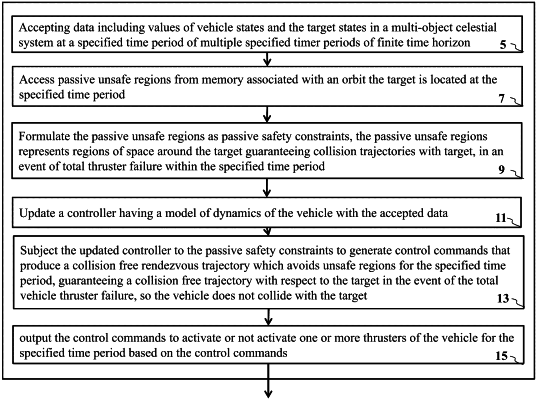| CPC B64G 1/646 (2013.01) [B64G 1/242 (2013.01)] | 27 Claims |

|
1. A system for controlling an operation of a vehicle to rendezvous the vehicle with a target over a finite time horizon, comprising:
a transceiver that accepts data including values of vehicle states and target states in a multi-object celestial system at a specified time period within the finite time horizon;
a processor at the specified time period that is configured to:
access a memory having stored passive unsafe regions, and select a set of passive unsafe regions corresponding to an orbit that the target is located at the specified time period, wherein the set of passive unsafe regions represents regions of space around the target guaranteeing collision trajectories with the target, in an event of total spacecraft thruster failure and wherein the set of passive unsafe regions are determined by computing backwards reachable sets of a region around the target under no control input to the vehicle, such that the region around the target is an approach ellipsoid (AE) region;
formulate the set of passive unsafe regions as passive safety constraints;
update a controller having a model of dynamics of the vehicle with the accepted data, and subject the updated controller to the passive safety constraints to generate control commands that produce a collision free rendezvous trajectory which avoids the set of passive unsafe regions, guaranteeing a collision-free trajectory with respect to the target in the event of the total vehicle thruster failure, so the vehicle does not collide with the target; and
output the control commands to activate or not activate one or more thrusters of the vehicle for the specified time period based on the control commands.
|